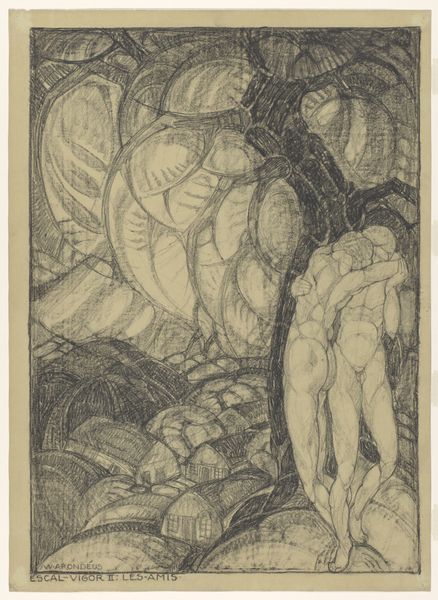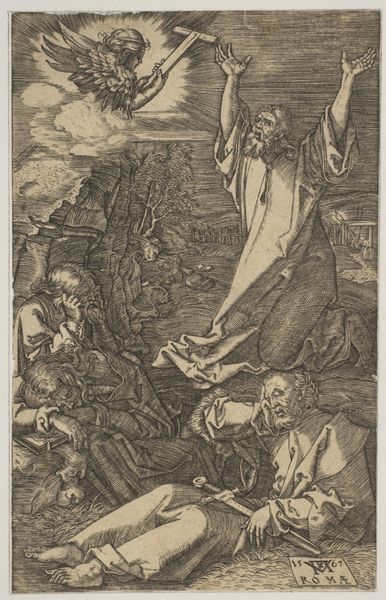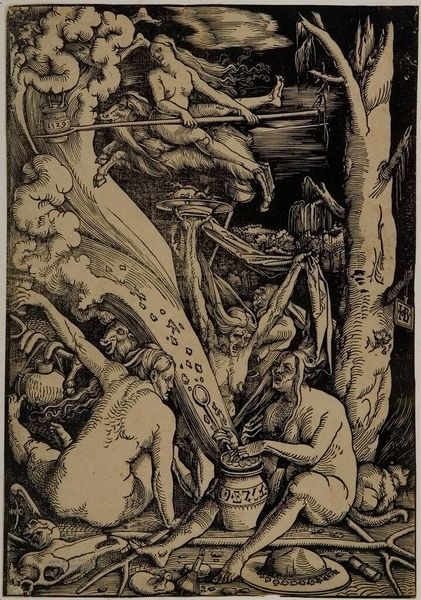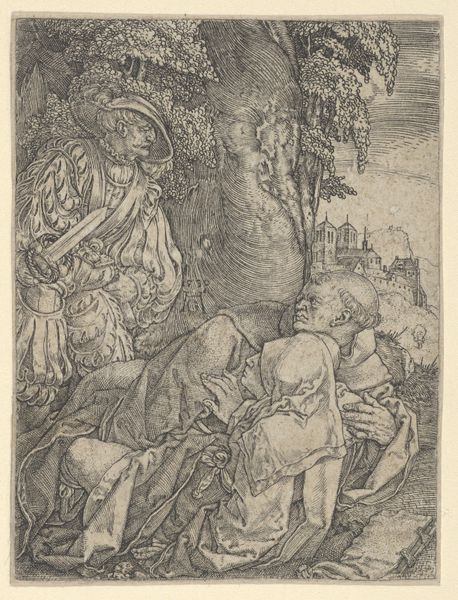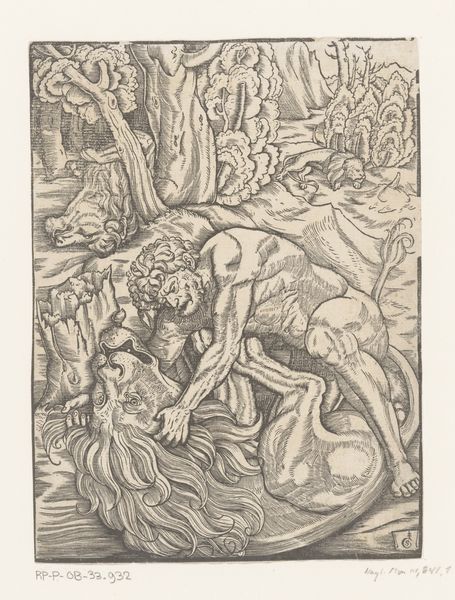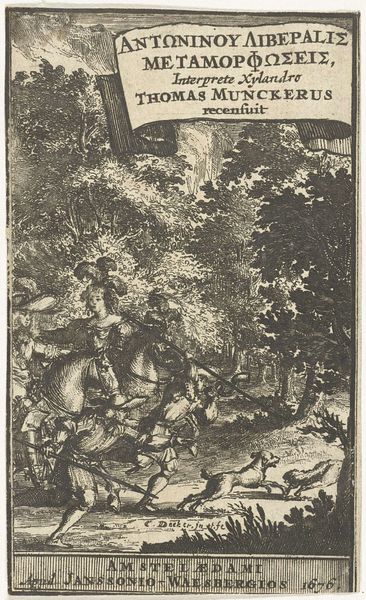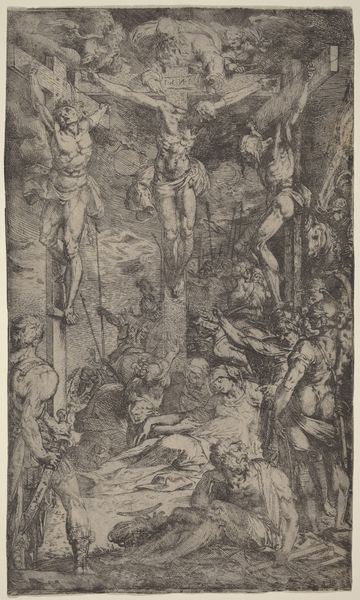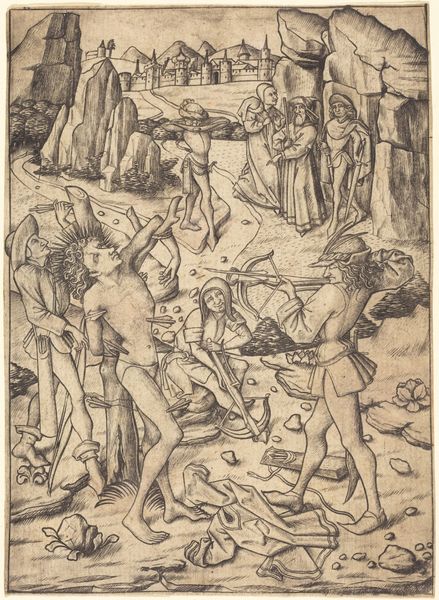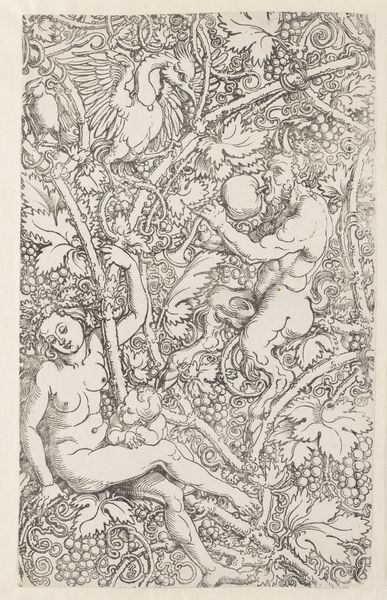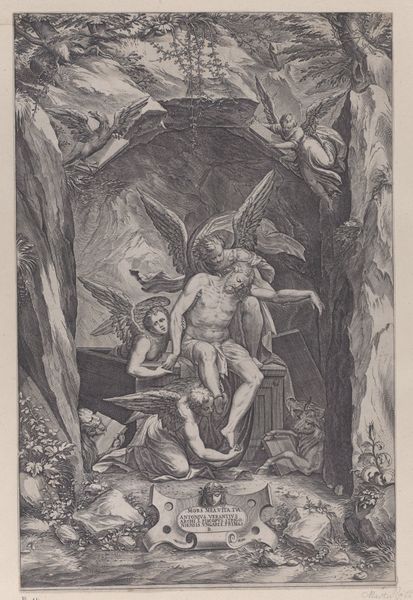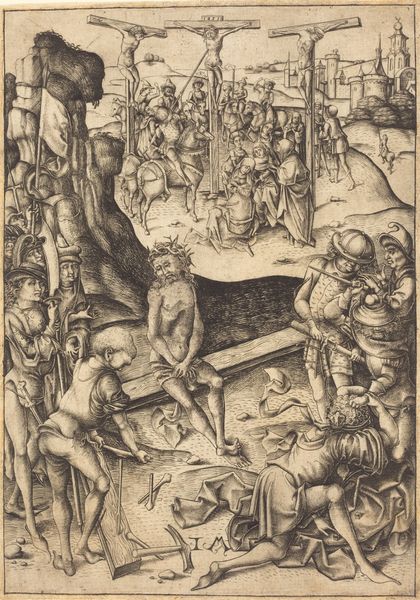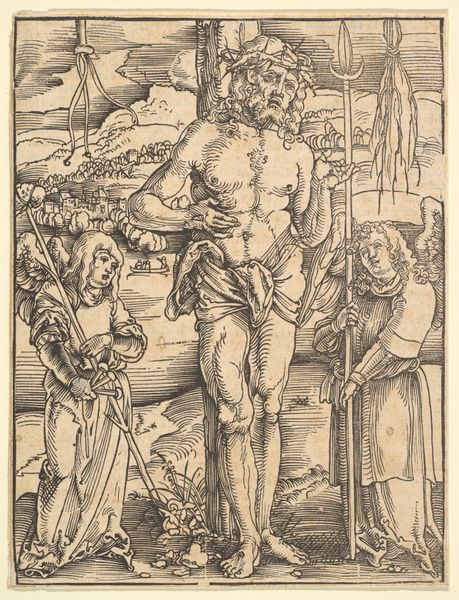
drawing, print, etching
#
drawing
#
medieval
#
narrative-art
# print
#
etching
#
figuration
#
female-nude
#
history-painting
#
northern-renaissance
#
erotic-art
Dimensions: Sheet: 14 7/16 × 10 3/16 in. (36.6 × 25.9 cm)
Copyright: Public Domain
Editor: Here we have Hans Baldung's "The Witches" from 1510, an etching that is just teeming with unsettling imagery. The composition is chaotic, really crowded. What strikes me most is how…earthy it all feels, almost as if Baldung wanted us to see the sheer labour of creating something 'evil'. What do you think, what's your take on it? Curator: Well, considering it’s an etching, a printmaking process, we can consider the democratization of the image, in a way. These witches, and this scene of what we might call transgression, is made available for mass consumption. So we must ask ourselves what type of labor and class status these witches could occupy. Is it just to demean working class and women by illustrating harmful stories? Or is Baldung suggesting we confront material and human cost when creating art? Editor: I hadn't thought about it that way! It is an etching, reproducible. Is Baldung using that fact to point out the inherent process in creating this supposed nightmare? The act of replication somewhat normalizes the witches’ activities... Curator: Exactly! It prompts us to think about the socio-economic underpinnings of belief, and how readily fears and prejudices can be circulated through visual culture, made material. Etchings aren't unique; they require production on some kind of scale, however big or small, no? How are we to assume it does not involve social costs to stigmatize a gender or social class? Editor: That’s really interesting! Thinking about it, the "means of production" were right there, in plain sight: creating multiple of the same image. It casts a new light on the imagery. Thanks for shedding a different perspective! Curator: Indeed, by considering materiality and consumption, we understand that even the most seemingly fantastical image is deeply rooted in the material realities of its time.
Comments
No comments
Be the first to comment and join the conversation on the ultimate creative platform.

